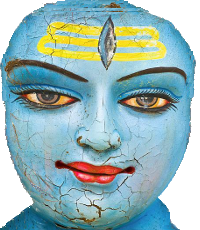3. India and Indianization
India, just as China, is not a country as much as a world unto itself. Indeed, it is often referred to as a “subcontinent” which includes not only India but today’s Pakistan, Bangladesh, and Sri Lanka as well. The history of India is long, as long as China’s. The first human settlements here go back at least 9,000 years; in the valley of the Indus River, the first organized states were established some 5,000 years ago. The ancient city of Harappa, in today’s Pakistan, traded with Egypt and Mesopotamia, made goods in copper and bronze and used an early form of writing. India has always surprised visitors with the enormous size of its population. There are more than two thousand separate ethnic groups here, often with their own language and customs. In addition, India is the origin of two world religions, Hinduism and Buddhism, and of smaller religions too, such as Jainism and Sikhism. By 2024, it is estimated that India will overtake China as the country with the largest population in the world.
Although both China and India have a long history, India’s is more difficult to summarize. From the third century BCE, China called itself an empire and although various dynasties replaced one another, it is possible to tell the history of China as a story of one specific political entity. In the case of India, there is no single political subject about which a story can be told. Instead, various states and empires have replaced each other in the course of the millennia. These different units have been independent of each other, often at war with each other, although there also have been periods when most, or at least much, of the subcontinent has been united. Today India is a country, but throughout most of its history, it would best be described as an international system. At the same time, it was an international system which was held together by a strong sense of shared identity — based above all on Hindu practices and beliefs.
Another similarity with China is that India constantly has been menaced by invasions. The invaders have typically swept down from the northwest, across the mountain passes of what today are Afghanistan and Pakistan. The reason for the invasions was always the same: the extraordinary wealth of the Indian subcontinent. In India, everything grew in great abundance and in the fertile rice fields of the south, it was possible to gather two, sometimes three, harvests per year. The surplus which the agriculture produced paid for an elaborate hierarchy of social classes and for powerful states with rulers famous for their ostentatious displays of wealth. In the Classical period — roughly during the first millennium CE — India must have been the richest country in the world. And well after that — during the Mughal period — India continued to be known as the emporium mundi, the world’s greatest hub for trade and manufacturing. In India, it was possible to find whatever one wanted and this was why everyone tried to get here. And those who had nothing to sell, like the invading armies coming from the northwest, took what they wanted by force.
The Mughals were one of these invaders. Originating in the region which is today’s Uzbekistan, they established themselves in India in 1526. During the following three hundred years, they were to rule next to all of the subcontinent. The Mughals were Muslims and their culture was to have a profound impact on Indian society. Yet Hindu traditions remained strong. Even the most powerful of foreign conquerors had to make compromises with Indian ways of life, and eventually, they blended in with the traditional culture. In addition, India has exercised a powerful influence over the rest of Asia, over Southeast Asia in particular. Starting in the first centuries CE, Indian cultural practices, and ideas regarding society and religious beliefs were disseminated all around the Indian Ocean, leading to new cultural combinations. We can talk about this as a process of “Indianization.” It is because of Indianization that today’s Thailand is a Buddhist country, that Angkor Wat in Cambodia originally was built as a Hindu temple complex, and why a majority of people in Indonesia are Muslims. The influence of Indian culture on non-Indians remains strong to this day — although the impact now is felt on a worldwide scale.















